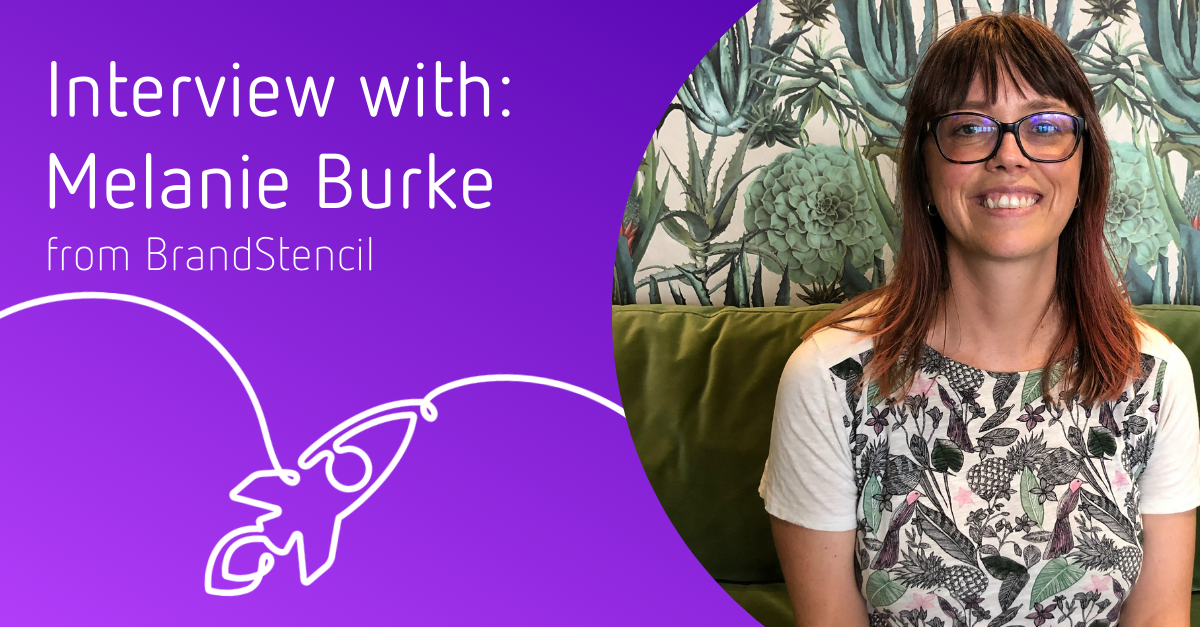A blurry logo here or a rogue typeface there can erode the strength of your brand identity and it can be hard to keep track of what’s coming and going. BrandStencil is on a mission to make the creation of brand documents easy and consistent - using an intuitive formula that even the most design-adverse user can use.
On our recent podcast we welcomed Melanie Burke, co-founder of BrandStencil, to pick her brain on how to create a brilliant brand - even on a budget. We met Melanie when we integrated our Asset Bank DAM with BrandStencil, and so far it’s been a match made in tech heaven!
Tell us a little bit about your role at BrandStencil, and what you guys offer?
I’m co-founder at BrandStencil. Our product is for busy marketers who are overwhelmed with requests from across their organisation to make marketing or comms material. The marketing team either manages this themselves, often creating a big backlog or allows people to make their own. The latter has no backlog but can result in off-brand and sometimes ugly designs. BrandStencil is a set of templates that anyone connected with the organisation can use to make designs like posters, leaflets, business cards and flyers. Many marketing teams already have a Digital Asset Manager (DAM) such as Asset Bank which is great because it makes it easier to give people access to assets to make stuff but where BrandStencil helps is that we can integrate the images in Asset Bank into the designs made from BrandStencil templates.
From your website it seems that you work with many clients within the charity and not for profit sectors, was this a conscious decision?
As well as BrandStencil we run a web development agency, Electric Putty. This business has been going since 2004 and we’ve always worked primarily in the not for profit sector, probably because my background was working in the advice sector. We love working with charities, it’s fantastic working on purpose driven projects and as an added bonus the sector is full of lovely people who are passionate about what they do. With BrandStencil we’ve branched out into other sectors and can happily report that we’ve got lovely clients in other industries too.
In your opinion, what makes a strong brand?
We often work with organisations who have gone through a rebrand and are looking for a way to easily disseminate that amongst their employees. It’s all very well having your lovely brand guidelines but if no-one understands the brand or has the tools to make decent designs the brand can quickly become diluted as there is a disconnect between what you see and what you believe about the brand. So my focus on what makes a strong brand is around brand governance, making sure that the effort and resource put into creating the brand positioning and values are not lost in brand identity execution.
This is especially important in the current times, it’s important that your marketing output is instantly recognisable as your brand. As an example using the charity sector, if a service is being advertised locally it’s important for your fundraising that people know which service comes from your organisation so they can connect what you do with your donation ask.
Which brands do you admire and why?
Monzo - A Disrupter fin-tech brand, they have a great looking identity with their brightly coloured bank card. Their tone of voice is very 'unbank-like' and as a company they aren't afraid to do things differently.
Amnesty International - They are an instantly recognisable global brand who refocused the brand values around people working together for a common cause. I like their simple but effective visual identity with the usage of their brand colours; yellow, black and white.
Do you think that tools such as BrandStencil will eventually dispel the need for designers, or can they exist hand in hand?
We tend to say that BrandStencil is not a design tool, it’s a productivity tool or an automation tool. We will always, always need designers. Having BrandStencil frees up designers to do high level creative tasks rather than spending their time on work that can easily be done by other people. For example, updating a business card or making an event poster, these jobs can be done by the people that need them rather than the back and forth with a highly skilled creative.
Do you believe that customers still have brand loyalty, or do you think it ultimately comes down to price? Do you have any tips for an organisation to increase brand loyalty?
Brand loyalty comes from lots of different reasons; price, as you mention but also;
- the product itself and how good it is
- the perception that the brand understand the person buying from them - 89% of American consumers say that they are loyal to brands that share their values (Wunderman Thompson, 2017).
- loyalty programs
- excellent customer experience
Increasing brand loyalty touches on all business functions from sales through to customer support. Having a consistent brand identity helps consolidate the work that is done to increase brand loyalty as it helps improve brand recognition.
What’s the most satisfying part of your role at BrandStencil?
I love helping people solve problems and I get to do that all the time in this role both with our customers and working with my lovely team. I love working in tech, it’s fast paced and I learn something new pretty much every day. I love building a SaaS business, it’s exciting watching it grow and evolve into a product that helps people do their jobs more effectively.
You can find out more about Melanie on LinkedIn and make sure to check out the BrandStencil website for info about their offerings!
Our podcast is recorded and produced by Let's Talk Video Production.



